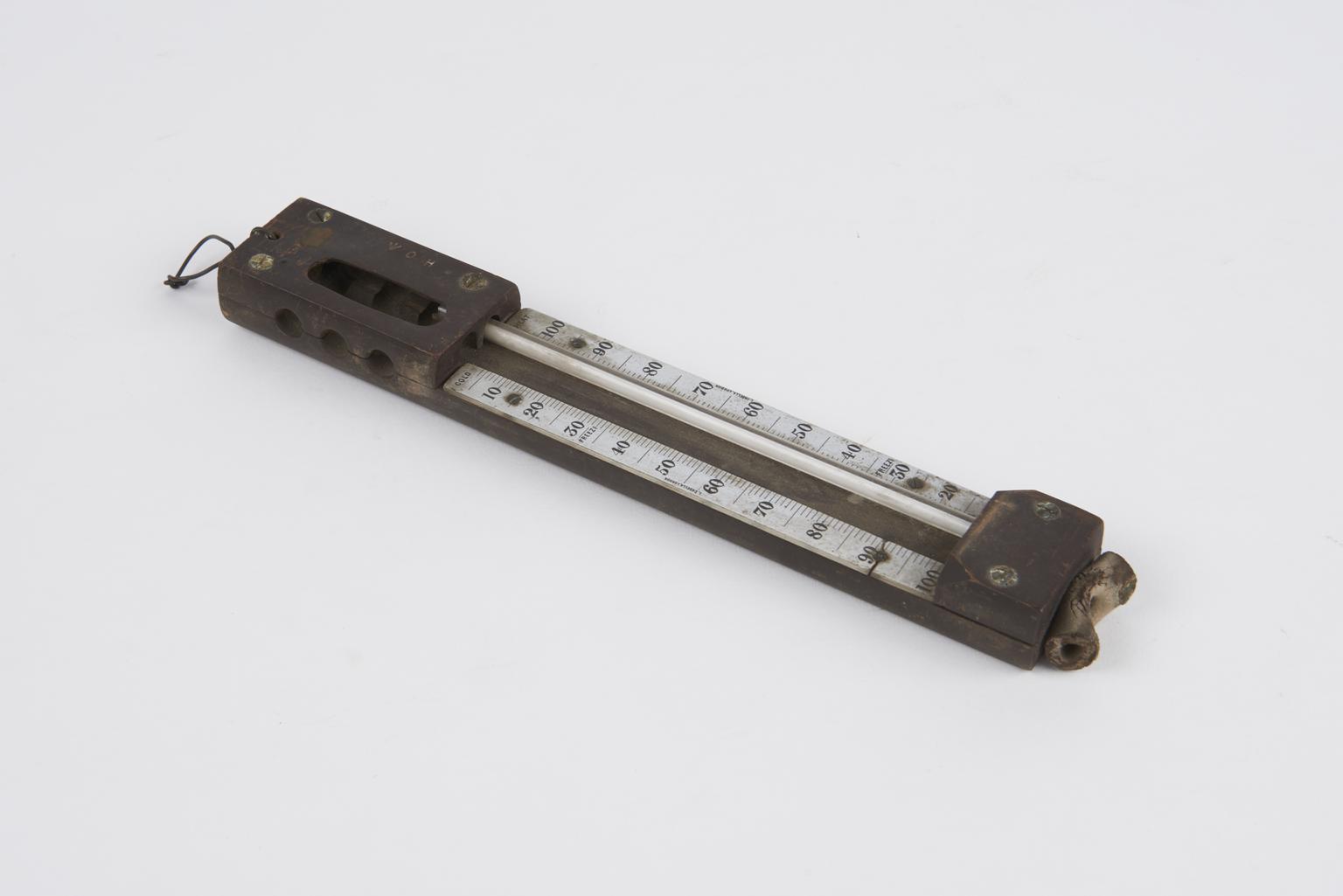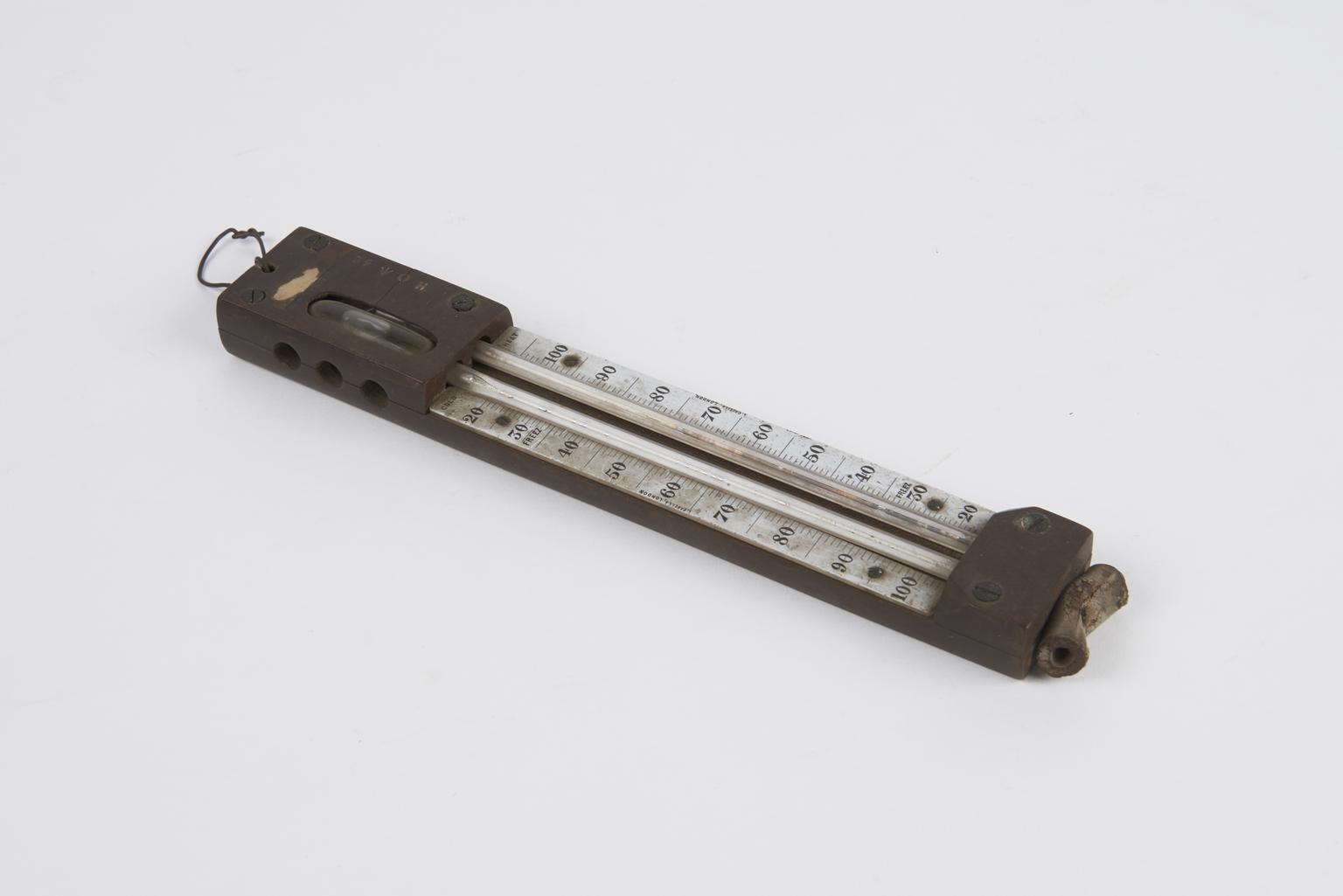
Miller-Casella thermometer, one of two, broken by pressure, used aboard HMS Challenger
Miller-Casella thermometer for taking temperatures at depth at sea, one of two, broken by pressure at a depth of 3875 fathoms in the Atlantic Ocean, designed by chemist William Allen Miller in 1869 and made by Casella, London, about 1872. This thermometer was used aboard HMS Challenger on the Challenger Expedition, 1872-1876. It is a modification of a maximum and minimum thermometer designed by James Six in 1780, adapted for use at pressure at sea.
Surveyors and navigators struggled to obtain accurate temperature readings from the deep sea because the pressure at depth rendered inaccurate the readings from conventional mercury thermometers.
This thermometer had a simple U-shape and its bulb was continuous with the tube. A smaller bulb on the opposite limb held the vapour whose elasticity returned the fluids as the temperature fell. The bulb was surrounded by a glass sheath, while the intervening space was filled with alcohol, its vapour and some air. Since the level of mercury and the indexes could not be seen against the dark ebonite mount, the tube was backed with white glass and rhe scales engraved on slips of white glass fastened beside the tube. Small bulges or aneurisms at the ends of each limb prevented the indexes being carried into the bulbs or down into the U-bend.
The Challenger Expedition, organised by the Royal Society and UK Hydrographic Office, circumnavigated the globe in order to study the physical, chemical and biological characteristics of the deep sea. Culminating in a series of detailed scientific reports, the expedition has sometimes been claimed to be the origin of modern oceanography. HMS Challenger, after which the expedition was named, was captained by Captain George Strong Nares; Scottish naturalist Charles Wyville Thomson led the six-man scientific team.
- Materials:
- wood (unidentified) , glass , rubber (unidentified) and metal (unknown)
- Object Number:
- 1876-815/1
- type:
- thermometers







